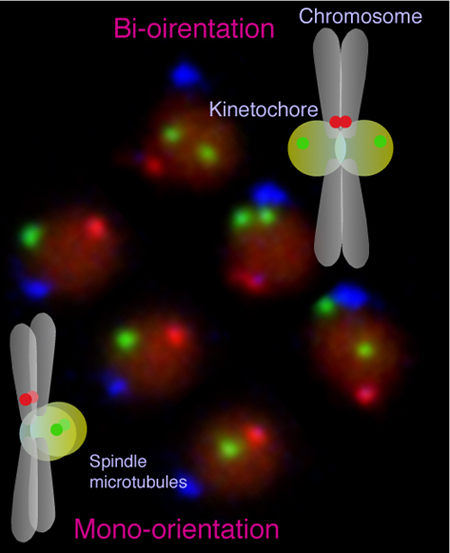Kinetochore geometry defined by cohesion within the centromere
During cell division microtubules capture chromosomes by binding to the kinetochore assembled in the centromeric region of chromosomes. In mitosis, sister chromatids are captured by microtubules emanating from both spindle poles, a process called bipolar attachment, whereas in meiosis I, sisters are attached to microtubules originating from one spindle pole, so called monopolar attachment. Using fission yeast, we demonstrate that cohesion of DNA lying under the core centromere induces the mono-orientation of kinetochores whereas cohesion at the peri-centromeric region promotes bi-orientation. Our study may reveal a general mechanism for the geometric regulation of kinetochores, which may contribute to understand the mechanism of human diseases originating from chromosome mis-segregation.
Program member
Yoshinori Watanabe (Institute of Molecular and Cellular Biosciences)

DNA at the core centromere was colored green, while DNA at the pricentromeric region was colored red. The cohesion of replicated DNA at the core centromeres was examined by excising the core centromere form the neighboring chromosomal domain. The excised green signals separated each other in chromosomes destined for mono-orientation, while they stayed together in chromosomes destined for bi-orientation.
